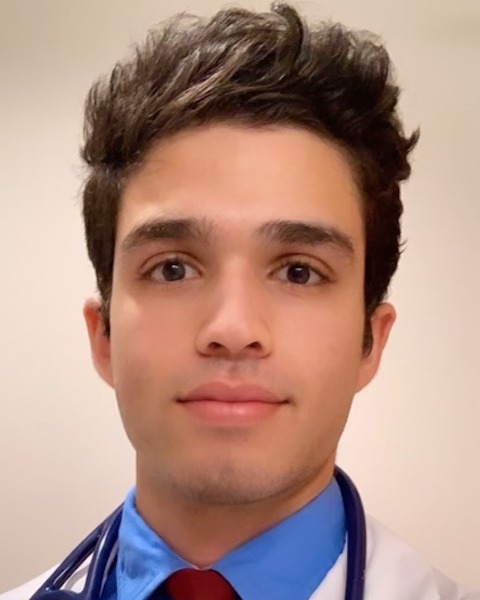Scientific Session
Scientific Session IV: Pediatrics
(SS#IV) Functional Integrative Genomic Identification of Choroid Plexus Linking Innate Immunity to Dysregulation of CSF Homeostasis in Diverse Forms of Hydrocephalus
Saturday, April 22, 2023
2:08pm - 2:16pm PST
Location: Los Angeles Convention Center, 406AB

Emre Kiziltug
Medical Student
Yale School of Medicine
Boston, Massachusetts, United States
Presenting Author(s)
Disclosure(s):
Emre Kiziltug: No financial relationships to disclose
Introduction: Post-hemorrhagic (PHH) and post-infectious hydrocephalus (PIH) are the most common forms of acquired hydrocephalus in the nation and worldwide, respectively. Currently, there are no pharmaceutical interventions, and treatment relies on shunting of cerebrospinal fluid. Using single-cell RNA sequencing (scRNAseq) for PIH and PHH rat models, we investigate the pathophysiology of PIH/PHH through inflammatory response by choroid plexus (ChP). We hypothesize that PIH and PHH, despite their distinct etiologies, share convergent pathophysiology that dysregulates ChP immune-secretory function.
Methods: We created PIH and PHH models by administering E. coli(+/-LPS), LPS, or autologous blood to adult male rats over 48-72h via a catheter inserted into their lateral ventricles. We harvested their ChP and performed integrated scRNAseq analysis to dissect the cellular and molecular pathology underlying PIH/PHH. To characterize the crosstalk between cell clusters, we applied CellChat, a scRNAseq tool used for inferring intercellular ligand-receptor communication networks. Our functional genomic approach characterizes the ChP immune response using the first-ever single-cell transcriptomic profile of the ChP in a pathological condition.
Results: CD45+ ChP immune cells from PIH and PHH animals demonstrated significantly different cell profiles compared to control, with PIH and PHH showing similar increases in peripherally-derived blood monocytes, proliferating ChP epiplexus macrophages and neutrophils in response to upregulated interferon signaling. Plasmacytoid dendritic cells and CD4+ T cells were particularly increased in PIH. CD45- dataset analysis uncovered a new epithelial sub-cluster exhibiting increased expression of type I interferon signaling in PIH and PHH. CellChat analysis showed upregulation of SPP1, CCL, and CXCL pathway ligand-receptor pairs in both PIH and PHH, with highly increased communication between epithelial, epiplexus, dendritic and T cells.
Conclusion : These results show the ChP is a dynamic, cellularly heterogeneous tissue with highly regulated immune-secretory capacity, expand our understanding of ChP immune-epithelial cell crosstalk, and reframe PIH and PHH as related neuroimmune disorders vulnerable to drugs.
Methods: We created PIH and PHH models by administering E. coli(+/-LPS), LPS, or autologous blood to adult male rats over 48-72h via a catheter inserted into their lateral ventricles. We harvested their ChP and performed integrated scRNAseq analysis to dissect the cellular and molecular pathology underlying PIH/PHH. To characterize the crosstalk between cell clusters, we applied CellChat, a scRNAseq tool used for inferring intercellular ligand-receptor communication networks. Our functional genomic approach characterizes the ChP immune response using the first-ever single-cell transcriptomic profile of the ChP in a pathological condition.
Results: CD45+ ChP immune cells from PIH and PHH animals demonstrated significantly different cell profiles compared to control, with PIH and PHH showing similar increases in peripherally-derived blood monocytes, proliferating ChP epiplexus macrophages and neutrophils in response to upregulated interferon signaling. Plasmacytoid dendritic cells and CD4+ T cells were particularly increased in PIH. CD45- dataset analysis uncovered a new epithelial sub-cluster exhibiting increased expression of type I interferon signaling in PIH and PHH. CellChat analysis showed upregulation of SPP1, CCL, and CXCL pathway ligand-receptor pairs in both PIH and PHH, with highly increased communication between epithelial, epiplexus, dendritic and T cells.
Conclusion : These results show the ChP is a dynamic, cellularly heterogeneous tissue with highly regulated immune-secretory capacity, expand our understanding of ChP immune-epithelial cell crosstalk, and reframe PIH and PHH as related neuroimmune disorders vulnerable to drugs.
